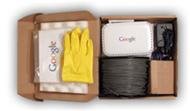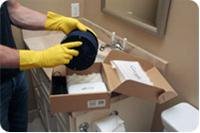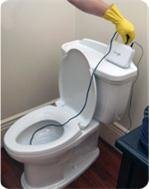If you’re using Google (Nasdaq: GOOG, stock) as your preferred search engine, chances are you’ll see the latest and innovative service launch of Google TiSP (BETA)™, a free in-home wireless broadband service that delivers online connectivity via users’ plumbing systems. The Toilet Internet Service Provider (TiSP) project is a self-installed, ad-supported online service that will be offered entirely free to any consumer with a WiFi-capable PC and a toilet connected to a local municipal sewage system.

Users who sign up online for the TiSP system will receive a full home self-installation kit, which includes a spindle of fiber-optic cable, a TiSP wireless router, installation CD and setup guide. Home installation is a simple matter of GFlushing™ the fiber-optic cable down to the nearest TiSP Access Node,  then plugging the other end into the network port of your Google-provided TiSP wireless router. Within sixty minutes, the Access Node’s crack team of Plumbing Hardware Dispatchers (PHDs) should have your internet connection up and running.
then plugging the other end into the network port of your Google-provided TiSP wireless router. Within sixty minutes, the Access Node’s crack team of Plumbing Hardware Dispatchers (PHDs) should have your internet connection up and running.
“We’ve got that whole organizing-the-world’s-information thing more or less under control,” said Google Co-founder and President Larry Page, a longtime supporter of so-called “dark porcelain” research and development. “What’s interesting, though, is how many different modalities there are for actually getting that information to you – not to mention from you.”
Installing a typical home TiSP system is a quick, easy and largely sanitary process — provided you follow these step-by-step instructions very, very carefully:
-
Step 2: Attach the sinker to the loose end of the cable, take one safe step backward and drop this weighted end into your toilet.
-
Step 3: Grasp both ends of the spindle firmly while a friend or loved one flushes, thus activating the patented GFlush™ system, which sends the weighted cable surfing through the plumbing system to one of the thousands of TiSP Access Nodes
-
Step 5: Plug the fiber-optic cable into your TiSP wireless router, which has a specially designed counterweight to withstand the centripetal force of flushing.
-
Step 7: Within sixty minutes – assuming proper data flow – the other end of your fiber-optic cable should have reached the nearest TiSP Access Node, where our Plumbing Hardware Dispatchers (PHDs) will remove the sinker and plug the line into our global data networking system.
-
Step 8: Congratulations, you’re online! (Please wash your hands before surfing.)

|
|
April 1st, 2007 by financetwitter
|


|

|

|

|

|

|































TiSP is a blatant rip-off of my DSL:
http://www.networkworld.com/community/?q=node/13240